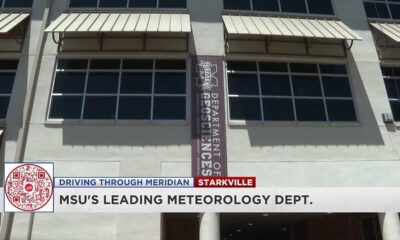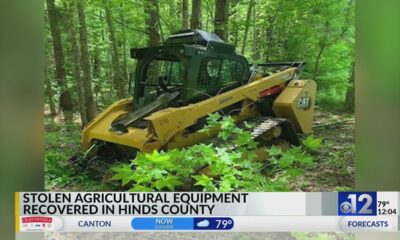Kaiser Health News
California Legislators Debate Froot Loops and Free Condoms
Don Thompson
Tue, 23 Apr 2024 09:00:00 +0000
SACRAMENTO, Calif. — California state lawmakers this year are continuing their progressive tilt on health policy with dozens of proposals including a ban on a Froot Loops ingredient and free condoms for high schoolers.
As states increasingly fracture along partisan lines, California Democrats are stamping their supermajority on legislation that they will consider until they adjourn at the end of August. But the cost of these proposals will be a major factor given the enormity of the state's deficit, currently estimated at between $38 billion and $73 billion.
Health Coverage
Lawmakers are again considering whether to create a government-run, single-payer health care system for all Californians. AB 2200 is Democratic Assembly member Ash Kalra's second such attempt, after a similar bill failed in 2022. The price tag would be enormous, though proponents say there would also be related savings. The high potential cost left Assembly Speaker Robert Rivas and others skeptical it could become law while the state faces a deficit.
related coverage
California Explores Private Insurance for Immigrants Lacking Legal Status. But Is It Affordable?
AB 4 would require Covered California, the state's health insurance exchange, to offer health insurance policies to people who are otherwise not able to obtain coverage because of their immigration status, to the extent it can under federal law. That could eventually lead to subsidized insurance premiums similar to those offered in Colorado and Washington.
Medical Debt
Health care providers and collection agencies would be barred from sharing patients' medical debt with credit reporting agencies under SB 1061. The bill would also prohibit credit reporting agencies from accepting, storing, or sharing any such information without consumer consent. Last year, the Biden administration announced plans to develop federal rules barring unpaid medical bills from affecting patients' credit scores. California would be the third state to remove medical bills from consumer credit reports.
Medi-Cal
related coverage
California's Expanded Health Coverage for Immigrants Collides With Medicaid Reviews
The Medi-Cal program, which provides health care for low-income people, would be required to cover medically supportive food and nutrition starting July 1, 2026, under AB 1975. The bill builds on an existing but limited pilot program. The legislation says Californians of color could benefit from adequate food and nutrition to combat largely preventable chronic health conditions, and it's one of 14 measures sought by the California Legislative Black Caucus as part of reparations for racial injustice.
More than 1.6 million California residents, disproportionately Latinos, have been kicked off Medi-Cal since the state resumed annual eligibility checks that were halted during the covid-19 pandemic. AB 2956 would have the state seek federal approval to slow those disenrollments by taking steps such as letting people 19 and older keep their coverage automatically for 12 months.
Violence Prevention
An increase in attacks on health workers is prompting lawmakers to consider boosting criminal penalties. In California, simple assault against workers inside an ER is considered the same as simple assault against almost anyone else, and carries a maximum punishment of a $1,000 fine and six months in jail. In contrast, simple assault against emergency medical workers in the field, such as an EMT responding to a 911 call, carries maximum penalties of a $2,000 fine and a year in jail. AB 977 would set the same maximum penalties for assaulting emergency health care workers on the job, whether they are in the field or an ER.
California could toughen penalties for interfering with reproductive health care services. Posting personal information or photographs of a patient or provider would be a felony if one of them is injured as a result. AB 2099 also boosts penalties for intimidation or obstruction.
related coverage
California Takes Up White House Call to Toughen Gun Storage Rules
Under SB 53, gun owners would have to lock up their weapons in state-approved safes or lockboxes where they would be inaccessible to anyone but the owner or another lawfully authorized user. Democratic Sen. Anthony Portantino, the bill's author, says that would make it tougher for anyone, including children, to use guns to harm themselves or others or use the weapons to commit crimes. Critics say it would make it harder to access the weapon when it's needed, such as to counter a home invasion. Relatedly, AB 2621 and AB 2917 address gun violence restraining orders.
Substance Use
The spike in drug overdoses has prompted several responses: AB 3073 would require the state's public health department to partner with local public health agencies, wastewater treatment facilities, and others to pilot wastewater testing for traces of dangerous drugs in an effort to pinpoint drug hot spots and identify new drugs. AB 1976 would require workplace first-aid kits to include naloxone nasal spray, which can reverse opioid overdoses. And senators have proposed at least nine bills aimed at curbing overdose deaths, particularly from the deadly synthetic opioid fentanyl.
Youth Welfare
Under AB 2229, backed by a “Know Your Period” campaign, school districts' sex education curricula would have to include menstrual health. There was no registered opposition.
Public schools would have to make free condoms available to all pupils in grades nine to 12 under SB 954, which would help prevent unwanted pregnancies and sexually transmitted infections, according to the author, Democratic Sen. Caroline Menjivar. Democratic Gov. Gavin Newsom vetoed a similar bill last year.
related coverage
Paris Hilton Backs California Bill Requiring Sunshine on ‘Troubled Teen Industry'
Reality show star Paris Hilton is backing a bipartisan bill to require more reporting on the treatment of youth in state-licensed short-term residential therapeutic programs. SB 1043 would require the state Department of Social Services to post information on the use of restraints and seclusion rooms on a public dashboard.
California would expand its regulation of hemp products, which have become increasingly popular among youths as a way to bypass the state's adults-only restrictions on legal cannabis. AB 2223 would build on a 2021 law that Assembly member Cecilia Aguiar-Curry said in hindsight didn't go far enough.
Public schools would, under AB 2316, generally be barred from providing food containing red dye 40, titanium dioxide, and other potentially harmful substances, which are currently used in products including Froot Loops and Flamin' Hot Cheetos. It's Democratic Assembly member Jesse Gabriel's follow-up to his legislation last year that attempted to ban a chemical used in Skittles.
Women's Health
AB 2515 would ban the sale of menstrual products with intentionally added PFAS, also known as “forever chemicals.” PFAS, short for perfluoroalkyl and polyfluoroalkyl substances, have been linked to serious health problems. Newsom vetoed a previous attempt.
related coverage
Amid Lack of Accountability for Bias in Maternity Care, a California Family Seeks Justice
Public grade schools and community colleges would, under AB 2901, have to provide 14 weeks of paid leave for pregnancies, miscarriages, childbirth, termination of pregnancies, or recovery. Newsom vetoed a similar bill in 2019.
AB 2319 would improve enforcement of a 2019 law aimed at reducing the disproportionate rate of maternal mortality among Black women and other pregnant women of color.
Social Media
Social media companies could face substantial penalties if they don't do enough to protect children, under AB 3172. The measure would allow financial damages of up to $1 million for each child under age 18 who proves in court they were harmed, or three times the amount of the child's actual damages. The industry opposes the bill, calling it harmful censorship.
Cyberbullies could face civil liabilities up to $75,000 under SB 1504, and those damages could be sought by anyone. Under current law, damages are capped at $7,500 and may be pursued only by the state attorney general.
Wellness
Bosses could be fined for repeatedly contacting employees after working hours under AB 2751, a “right to disconnect” bill patterned after similar restrictions in 13 countries. The bill's author, Democratic Assembly member Matt Haney, said despite the advent of smartphones that “have blurred the boundaries between work and home life,” employees shouldn't be expected to work around the clock. The measure is opposed by the California Chamber of Commerce.
Finally, Democrat Anthony Rendon, a long-serving state Assembly speaker, is spending his last year in the chamber leading a first-in-the-nation Select Committee on Happiness and Public Policy Outcomes. The committee isn't planning any legislation but intends to issue a report after lawmakers adjourn in August.
——————————
By: Don Thompson
Title: California Legislators Debate Froot Loops and Free Condoms
Sourced From: kffhealthnews.org/news/article/california-legislators-debate-froot-loops-free-condoms-bill-roundup/
Published Date: Tue, 23 Apr 2024 09:00:00 +0000
Did you miss our previous article…
https://www.biloxinewsevents.com/biden-administration-sets-higher-staffing-mandates-most-nursing-homes-dont-meet-them/
Kaiser Health News
Oh, Dear! Baby Gear! Why Are the Manuals So Unclear?
Darius Tahir
Fri, 03 May 2024 09:00:00 +0000
Since becoming a father a few months ago, I've been nursing a grudge against something tiny, seemingly inconsequential, and often discarded: instructional manuals. Parenthood requires a lot of gadgetry to maintain a kid's health and welfare. Those gadgets require puzzling over booklets, decoding inscrutable pictographs, and wondering whether warnings can be safely ignored or are actually disclosing a hazard.
To give an example, my daughter, typically a cooing little marsupial, quickly discovered babyhood's superpower: Infants emerge from the womb with talon-strength fingernails. She wasn't afraid to use them, against either her parents or herself. So we purchased a pistachio-green, hand-held mani-pedi device.
That was the easy part. The difficulty came when we consulted the manual, a palm-sized, two-page document.
The wandlike tool is topped with a whirring disc. One can apparently adjust the speed of its rotation using a sliding toggle on the wand. But the product manual offered confusing advice: “Please do not use round center position grinding,” it said. Instead, “Please use the outer circle position to grinding.” It also proclaimed, “Stay away from children.” In finer print, the manual revealed the potential combination of kids and the device's smaller parts was the reason for concern.
One would hope for more clarity about a doodad that could inadvertently cause pain.
Later, I noticed another warning: “If you do not use this product for a long time, please remove the battery.” Was it dangerous? Or simply an unclear and unhelpful yet innocuous heads-up? We didn't know what to do with this information.
We now notice shoddy instructions everywhere.
One baby carrier insert told us to use the product for infants with “adequate” head, neck, and torso control — a vague phrase. (The manufacturer declined to comment.)
Another manual, this one online and for a car seat — a device that's supposed to protect your kid — informed readers with words and images that a model baby was “properly positioned” relative to the top of the headrest “structure” when more than one inch from the top. Just pixels away, the same model, slumped further down, was deemed improperly positioned: “The headrest should not be more than 1” from the top of her head,” it said, in tension with its earlier instructions. Which was it, more than one inch or not? So we fiddle and hope for the best.
I acknowledge this sounds like new-parent paranoia. But we're not entirely crazy: Manuals are important, and ones for baby products “are notoriously difficult to write,” Paul Ballard, the managing director of 3di Information Solutions, a technical writing firm, told me.
Deborah Girasek, a professor of social and behavior sciences at the Uniformed Services University of the Health Sciences, told me that for decades, for the young and middle-aged alike, unintentional injury has been the leading cause of death. That's drownings, fires, suffocation, car crashes. The USU is a federal service academy training medical students destined for the armed services or other parts of the government.
Some of these deaths are caused by lack of effective communication — that is, the failure of instruction about how to avoid injury.
And these problems stretch from cheap devices to the most sophisticated products of research and development.
It's a shortcoming that's prompted several regulatory agencies charged with keeping Americans healthy, including the Consumer Product Safety Commission, the Food and Drug Administration, and the National Highway Traffic Safety Administration, to prod companies into providing more helpful instructions.
By some lights, they've had success. NHTSA, for example, has employees who actually read manuals. The agency says about three-quarters of car seats' manuals rate four or five stars out of five, up from 38% in 2008. Then again, our car seat's has a five-star rating. But it turns out the agency doesn't evaluate online material.
Medical product manuals sometimes don't fare too well either. Raj Ratwani, director of MedStar Health's Human Factors program, told me that, for a class he teaches to nurses and doctors, he prompted students to evaluate the instructions for covid-19 tests. The results were poor. One time, instructions detailed two swabs. The kit had only one.
Technical writers I spoke with identified this kind of mistake as a symptom of cost cutting. Maybe a company creates one manual meant to cover a range of products. Maybe it puts together the manual at the last moment. Maybe it farms out the task to marketers, who don't necessarily think about how manuals need to evolve as the products do.
For some of these cost-cutting tactics, “the motivation for doing it can be cynical,” Ballard said.
Who knows.
Some corners of the technical writing world are gloomy. People worry their jobs aren't secure, that they're going to be replaced by someone overseas or artificial intelligence. Indeed, multiple people I spoke with said they'd heard about generative AI experiments in this area.
Even before AI has had its effect, the job market has weighed in. According to the federal government, the number of technical writers fell by a third from 2001, its recent peak, to 2023.
One solution for people like us — frustrated by inscrutable instructions — is to turn to another uncharted world: social media. YouTube, for instance, has helped us figure out a lot of the baby gadgets we have acquired. But those videos also are part of a wild West, where creators offer helpful tips on baby products then refer us to their other productions (read: ads) touting things like weight loss services. Everyone's got to make a living, of course; but I'd rather they not make a buck off viewers' postpartum anxiety.
It reminds me of an old insight that became a digital-age cliché: Information wants to be free. Everyone forgets the second half: Information also wants to be expensive. It's cheap to share information once produced, but producing that information is costly — and a process that can't easily or cheaply be replaced. Someone must pay. Instruction manuals are just another example.
——————————
By: Darius Tahir
Title: Oh, Dear! Baby Gear! Why Are the Manuals So Unclear?
Sourced From: kffhealthnews.org/news/article/baby-product-instruction-manuals-confusing-technical-writing/
Published Date: Fri, 03 May 2024 09:00:00 +0000
Kaiser Health News
California Floats Extending Health Insurance Subsidies to All Adult Immigrants
Jasmine Aguilera, El Tímpano
Fri, 03 May 2024 09:00:00 +0000
Marisol Pantoja Toribio found a lump in her breast in early January. Uninsured and living in California without legal status and without her family, the usually happy-go-lucky 43-year-old quickly realized how limited her options were.
“I said, ‘What am I going to do?'” she said in Spanish, quickly getting emotional. She immediately worried she might have cancer. “I went back and forth — I have [cancer], I don't have it, I have it, I don't have it.” And if she was sick, she added, she wouldn't be able to work or pay her rent. Without health insurance, Pantoja Toribio couldn't afford to find out if she had a serious condition.
Beginning this year, Medi-Cal, California's Medicaid program, expanded to include immigrants lacking legal residency, timing that could have worked out perfectly for Pantoja Toribio, who has lived in the Bay Area city of Brentwood for three years. But her application for Medi-Cal was quickly rejected: As a farmworker earning $16 an hour, her annual income of roughly $24,000 was too high to qualify for the program.
California is the first state to expand Medicaid to all qualifying adults regardless of immigration status, a move celebrated by health advocates and political leaders across the state. But many immigrants without permanent legal status, especially those who live in parts of California where the cost of living is highest, earn slightly too much money to qualify for Medi-Cal.
The state is footing the bill for the Medi-Cal expansion, but federal law bars those it calls “undocumented” from receiving insurance subsidies or other benefits from the Affordable Care Act, leaving many employed but without viable health insurance options.
Now, the same health advocates who fought for the Medi-Cal expansion say the next step in achieving health equity is expanding Covered California, the state's ACA marketplace, to all immigrant adults by passing AB 4.
“There are people in this state who work and are the backbone of so many sectors of our economy and contribute their labor and even taxes … but they are locked out of our social safety net,” said Sarah Dar, policy director at the California Immigrant Policy Center, one of two organizations sponsoring the bill, dubbed #Health4All.
To qualify for Medi-Cal, an individual cannot earn more than 138% of the federal poverty level, which currently amounts to nearly $21,000 a year for a single person. A family of three would need to earn less than $35,632 a year.
For people above those thresholds, the Covered California marketplace offers various health plans, often with federal and state subsidies, yielding premiums as low as $10 a month. The hope is to create what advocates call a “mirror marketplace” on the Covered California website so that immigrants regardless of status can be offered the same health plans that would be subsidized only by the state.
Despite a Democratic supermajority in the legislature, the bill might struggle to pass, with the state facing a projected budget deficit for next year of anywhere from $38 billion to $73 billion. Gov. Gavin Newsom and legislative leaders announced a $17 billion package to start reducing the gap, but significant spending cuts appear inevitable.
It's not clear how much it would cost to extend Covered California to all immigrants, according to Assembly member Joaquin Arambula, the Fresno Democrat who introduced the bill.
The immigrant policy center estimates that setting up the marketplace would cost at least $15 million. If the bill passes, sponsors would then need to secure funding for the subsidies, which could run into the billions of dollars annually.
“It is a tough time to be asking for new expenditures,” Dar said. “The mirror marketplace startup cost is a relatively very low number. So we're hopeful that it's still within the realm of possibility.”
Arambula said he's optimistic the state will continue to lead in improving access to health care for immigrants who lack legal residency.
“I believe we will continue to stand up, as we are working to make this a California for all,” he said.
The bill passed the Assembly last July on a 64-9 vote and now awaits action by the Senate Appropriations Committee, Arambula's office said.
An estimated 520,000 people in California would qualify for a Covered California plan if not for their lack of legal status, according to the labor research center at the University of California-Berkeley. Pantoja Toribio, who emigrated alone from Mexico after leaving an abusive relationship, said she was lucky. She learned about alternative health care options when she made her weekly visit to a food pantry at Hijas del Campo, a Contra Costa County farmworker advocacy organization, where they told her she might qualify for a plan for low-income people through Kaiser Permanente.
Pantoja Toribio applied just before open enrollment closed at the end of January. Through the plan, she learned that the lump in her breast was not cancerous.
“God heard me,” she said. “Thank God.”
This article was produced by KFF Health News, which publishes California Healthline, an editorially independent service of the California Health Care Foundation.
——————————
By: Jasmine Aguilera, El Tímpano
Title: California Floats Extending Health Insurance Subsidies to All Adult Immigrants
Sourced From: kffhealthnews.org/news/article/california-legislation-medicaid-subsidies-all-adult-immigrants/
Published Date: Fri, 03 May 2024 09:00:00 +0000
Did you miss our previous article…
https://www.biloxinewsevents.com/bird-flu-is-bad-for-poultry-and-dairy-cows-its-not-a-dire-threat-for-most-of-us-yet/
Kaiser Health News
Bird Flu Is Bad for Poultry and Dairy Cows. It’s Not a Dire Threat for Most of Us — Yet.
Amy Maxmen
Fri, 03 May 2024 09:00:00 +0000
Headlines are flying after the Department of Agriculture confirmed that the H5N1 bird flu virus has infected dairy cows around the country. Tests have detected the virus among cattle in nine states, mainly in Texas and New Mexico, and most recently in Colorado, said Nirav Shah, principal deputy director at the Centers for Disease Control and Prevention, at a May 1 event held by the Council on Foreign Relations.
A menagerie of other animals have been infected by H5N1, and at least one person in Texas. But what scientists fear most is if the virus were to spread efficiently from person to person. That hasn't happened and might not. Shah said the CDC considers the H5N1 outbreak “a low risk to the general public at this time.”
Viruses evolve and outbreaks can shift quickly. “As with any major outbreak, this is moving at the speed of a bullet train,” Shah said. “What we'll be talking about is a snapshot of that fast-moving train.” What he means is that what's known about the H5N1 bird flu today will undoubtedly change.
With that in mind, KFF Health News explains what you need to know now.
Q: Who gets the bird flu?
Mainly birds. Over the past few years, however, the H5N1 bird flu virus has increasingly jumped from birds into mammals around the world. The growing list of more than 50 species includes seals, goats, skunks, cats, and wild bush dogs at a zoo in the United Kingdom. At least 24,000 sea lions died in outbreaks of H5N1 bird flu in South America last year.
What makes the current outbreak in cattle unusual is that it's spreading rapidly from cow to cow, whereas the other cases — except for the sea lion infections — appear limited. Researchers know this because genetic sequences of the H5N1 viruses drawn from cattle this year were nearly identical to one another.
The cattle outbreak is also concerning because the country has been caught off guard. Researchers examining the virus's genomes suggest it originally spilled over from birds into cows late last year in Texas, and has since spread among many more cows than have been tested. “Our analyses show this has been circulating in cows for four months or so, under our noses,” said Michael Worobey, an evolutionary biologist at the University of Arizona in Tucson.
Q: Is this the start of the next pandemic?
Not yet. But it's a thought worth considering because a bird flu pandemic would be a nightmare. More than half of people infected by older strains of H5N1 bird flu viruses from 2003 to 2016 died. Even if death rates turn out to be less severe for the H5N1 strain currently circulating in cattle, repercussions could involve loads of sick people and hospitals too overwhelmed to handle other medical emergencies.
Although at least one person has been infected with H5N1 this year, the virus can't lead to a pandemic in its current state. To achieve that horrible status, a pathogen needs to sicken many people on multiple continents. And to do that, the H5N1 virus would need to infect a ton of people. That won't happen through occasional spillovers of the virus from farm animals into people. Rather, the virus must acquire mutations for it to spread from person to person, like the seasonal flu, as a respiratory infection transmitted largely through the air as people cough, sneeze, and breathe. As we learned in the depths of covid-19, airborne viruses are hard to stop.
That hasn't happened yet. However, H5N1 viruses now have plenty of chances to evolve as they replicate within thousands of cows. Like all viruses, they mutate as they replicate, and mutations that improve the virus's survival are passed to the next generation. And because cows are mammals, the viruses could be getting better at thriving within cells that are closer to ours than birds'.
The evolution of a pandemic-ready bird flu virus could be aided by a sort of superpower possessed by many viruses. Namely, they sometimes swap their genes with other strains in a process called reassortment. In a study published in 2009, Worobey and other researchers traced the origin of the H1N1 “swine flu” pandemic to events in which different viruses causing the swine flu, bird flu, and human flu mixed and matched their genes within pigs that they were simultaneously infecting. Pigs need not be involved this time around, Worobey warned.
Q: Will a pandemic start if a person drinks virus-contaminated milk?
Not yet. Cow's milk, as well as powdered milk and infant formula, sold in stores is considered safe because the law requires all milk sold commercially to be pasteurized. That process of heating milk at high temperatures kills bacteria, viruses, and other teeny organisms. Tests have identified fragments of H5N1 viruses in milk from grocery stores but confirm that the virus bits are dead and, therefore, harmless.
Unpasteurized “raw” milk, however, has been shown to contain living H5N1 viruses, which is why the FDA and other health authorities strongly advise people not to drink it. Doing so could cause a person to become seriously ill or worse. But even then, a pandemic is unlikely to be sparked because the virus — in its current form — does not spread efficiently from person to person, as the seasonal flu does.
Q: What should be done?
A lot! Because of a lack of surveillance, the U.S. Department of Agriculture and other agencies have allowed the H5N1 bird flu to spread under the radar in cattle. To get a handle on the situation, the USDA recently ordered all lactating dairy cattle to be tested before farmers move them to other states, and the outcomes of the tests to be reported.
But just as restricting covid tests to international travelers in early 2020 allowed the coronavirus to spread undetected, testing only cows that move across state lines would miss plenty of cases.
Such limited testing won't reveal how the virus is spreading among cattle — information desperately needed so farmers can stop it. A leading hypothesis is that viruses are being transferred from one cow to the next through the machines used to milk them.
To boost testing, Fred Gingrich, executive director of a nonprofit organization for farm veterinarians, the American Association of Bovine Practitioners, said the government should offer funds to cattle farmers who report cases so that they have an incentive to test. Barring that, he said, reporting just adds reputational damage atop financial loss.
“These outbreaks have a significant economic impact,” Gingrich said. “Farmers lose about 20% of their milk production in an outbreak because animals quit eating, produce less milk, and some of that milk is abnormal and then can't be sold.”
The government has made the H5N1 tests free for farmers, Gingrich added, but they haven't budgeted money for veterinarians who must sample the cows, transport samples, and file paperwork. “Tests are the least expensive part,” he said.
If testing on farms remains elusive, evolutionary virologists can still learn a lot by analyzing genomic sequences from H5N1 viruses sampled from cattle. The differences between sequences tell a story about where and when the current outbreak began, the path it travels, and whether the viruses are acquiring mutations that pose a threat to people. Yet this vital research has been hampered by the USDA's slow and incomplete posting of genetic data, Worobey said.
The government should also help poultry farmers prevent H5N1 outbreaks since those kill many birds and pose a constant threat of spillover, said Maurice Pitesky, an avian disease specialist at the University of California-Davis.
Waterfowl like ducks and geese are the usual sources of outbreaks on poultry farms, and researchers can detect their proximity using remote sensing and other technologies. By zeroing in on zones of potential spillover, farmers can target their attention. That can mean routine surveillance to detect early signs of infections in poultry, using water cannons to shoo away migrating flocks, relocating farm animals, or temporarily ushering them into barns. “We should be spending on prevention,” Pitesky said.
Q: OK it's not a pandemic, but what could happen to people who get this year's H5N1 bird flu?
No one really knows. Only one person in Texas has been diagnosed with the disease this year, in April. This person worked closely with dairy cows, and had a mild case with an eye infection. The CDC found out about them because of its surveillance process. Clinics are supposed to alert state health departments when they diagnose farmworkers with the flu, using tests that detect influenza viruses, broadly. State health departments then confirm the test, and if it's positive, they send a person's sample to a CDC laboratory, where it is checked for the H5N1 virus, specifically. “Thus far we have received 23,” Shah said. “All but one of those was negative.”
State health department officials are also monitoring around 150 people, he said, who have spent time around cattle. They're checking in with these farmworkers via phone calls, text messages, or in-person visits to see if they develop symptoms. And if that happens, they'll be tested.
Another way to assess farmworkers would be to check their blood for antibodies against the H5N1 bird flu virus; a positive result would indicate they might have been unknowingly infected. But Shah said health officials are not yet doing this work.
“The fact that we're four months in and haven't done this isn't a good sign,” Worobey said. “I'm not super worried about a pandemic at the moment, but we should start acting like we don't want it to happen.”
——————————
By: Amy Maxmen
Title: Bird Flu Is Bad for Poultry and Dairy Cows. It's Not a Dire Threat for Most of Us — Yet.
Sourced From: kffhealthnews.org/news/article/bird-flu-h5n1-risks-questions-answered/
Published Date: Fri, 03 May 2024 09:00:00 +0000
-
Mississippi Today5 days ago
On this day in 1951
-
SuperTalk FM1 day ago
Driver’s education set to become mandatory in Mississippi as bill passes
-
SuperTalk FM4 days ago
Festival merger in Leland sets up one major event for Mississippi Delta
-
Mississippi News6 days ago
One injured in Mississippi officer-involved shooting after chase
-
SuperTalk FM4 days ago
PERS bill set to phase in employer rate increase heads to governor’s desk
-
Mississippi Business2 days ago
Geartek expanding operations in Alcorn County
-
Mississippi News3 days ago
Two women accused of shoplifting across southeast captured in Mississippi
-
SuperTalk FM7 days ago
Investigation underway after gun found in backpack of Ridgeland High School student







































